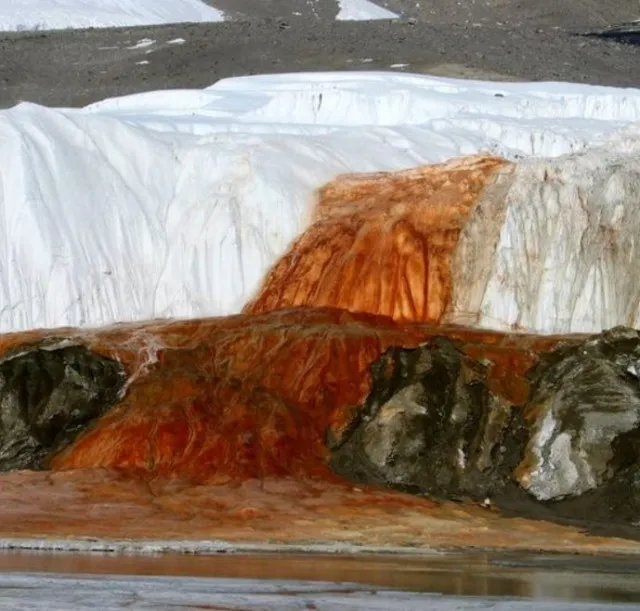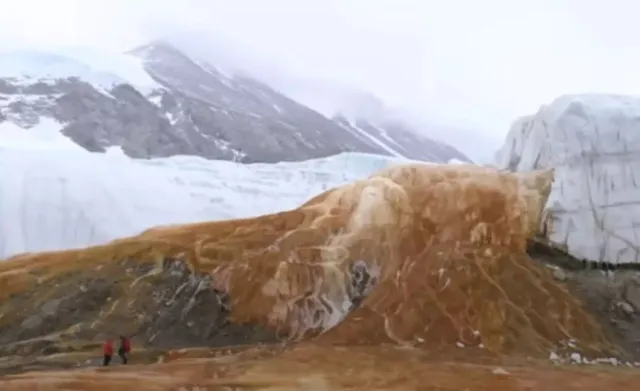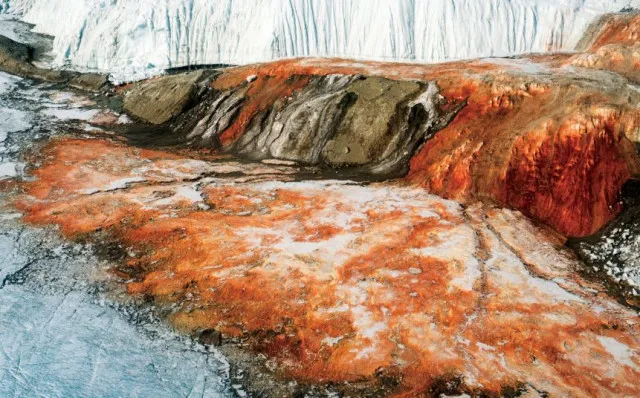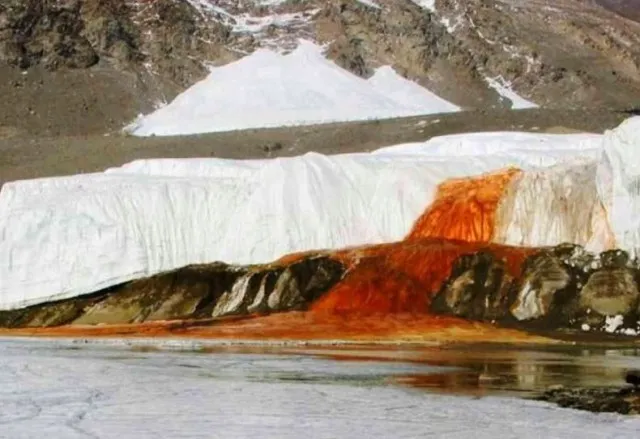The century-old mystery behind Antarctica’s Blood Falls has been unraveled, revealing its fascinating origins.
What are Antarctica’s Blood falls?
In East Antarctica, a mysterious red flow called Blood Falls pours from Taylor Glacier, staining the ice as if it’s bleeding.
For over a century, this strange feature has puzzled scientists and fascinated the public.

The science behind the blood falls phenomenon
Blood Falls isn’t what it seems at first glance. What looks like a river of blood is actually a high-salinity water outflow colored by iron oxides.
This salty, iron-rich water seeps from beneath Taylor Glacier and oxidizes upon exposure to air, turning a rusty red. Geologists and biologists agree—there’s nothing quite like it anywhere else on Earth.

Louisiana State University hydrogeologist spoke to PBS Terra, saying, “Blood Falls is a bit of an obsession… there is nothing else like it on Earth.” This unusual feature is a prime subject for studying Earth’s extreme environments.
A unique glacial structure and composition of Blood Falls
Unlike most Antarctic glaciers, Taylor Glacier isn’t frozen to its bedrock.
Scientists believe this difference results from ancient seawater beneath the glacier, which remains liquid due to high salt concentrations.

When this salty water emerges, it interacts with iron in the bedrock, creating the red “blood” effect as it oxidizes in the air.
Microbiologist Jill Mikucki of the University of Tennessee explained to PBS, “All the red here is iron oxides… If the water is clear and there’s iron in it, that means it hasn’t been oxidized yet.” As the iron-rich water meets oxygen, it rusts, producing the striking red color.
Blood Falls contains microbial life in a harsh environment.

Blood Falls also holds clues about life in extreme conditions.
The high salinity and lack of sunlight challenge most forms of life, but unique microbes have adapted here.
Studying them may offer insights into survival strategies of microbes in other parts of our solar system, like Mars.
Mikucki added that understanding these microbes might help scientists predict where and how life could exist on other planets.

For scientists and nature enthusiasts alike, Blood Falls is a rare wonder—a reminder of Earth’s power to create and sustain life under seemingly impossible conditions.
The mystery may be solved, but the fascination continues as this natural marvel sheds light on possible life far beyond Earth.